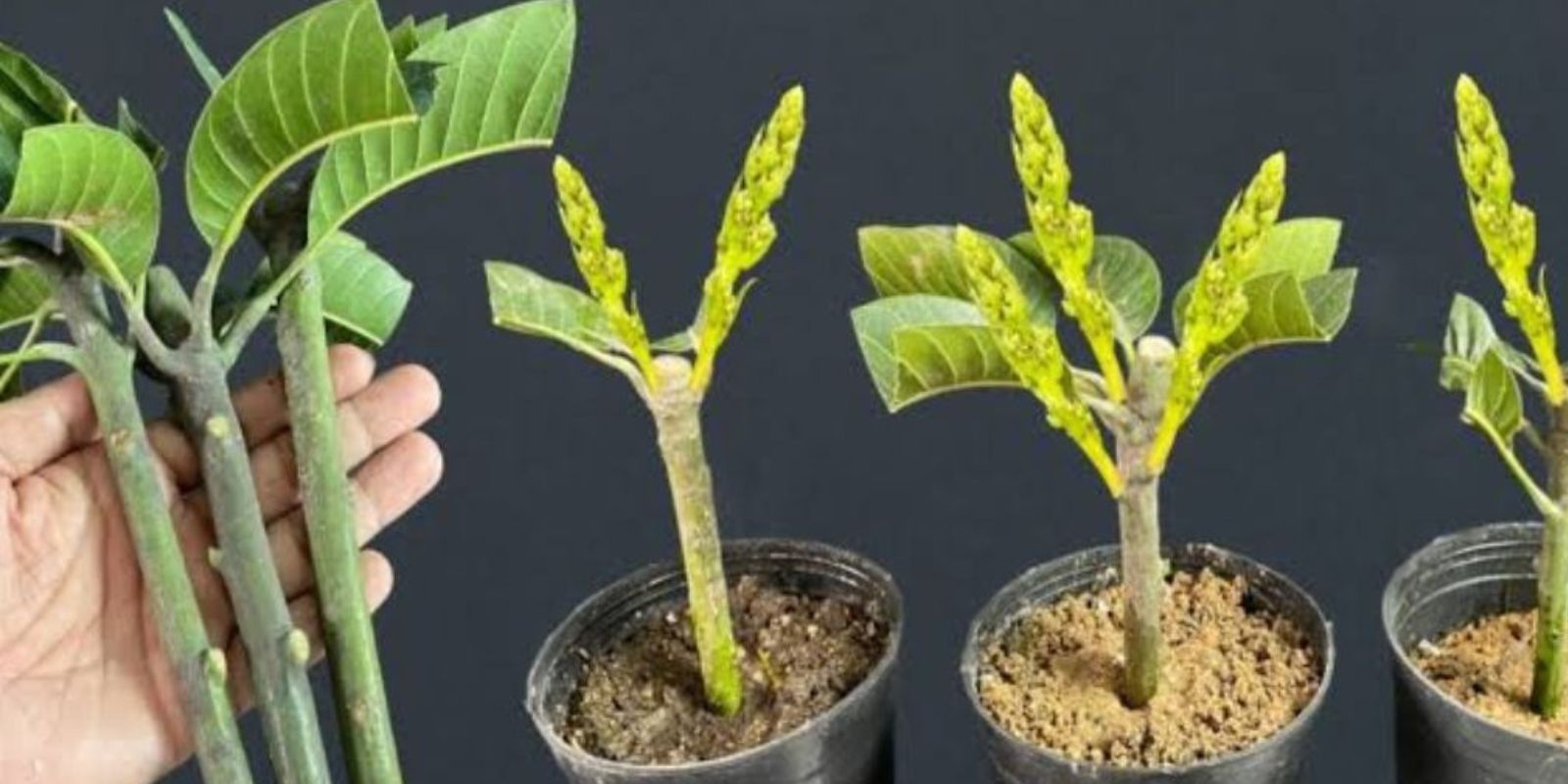Mango trees (Mangifera indica) are one of the most rewarding fruit trees to grow, providing delicious, juicy fruit and a beautiful canopy of green foliage. While mango trees are typically grown from seeds or grafted onto rootstock, did you know you can also propagate them from cuttings in water? This method is a simple, cost-effective way to grow your own mango tree at home without waiting years for a seedling to mature.
In this comprehensive guide, we’ll walk you through the process of growing mango trees from cuttings in water, discuss the benefits of this method, and provide essential tips for success.
Why Grow Mango Trees from Cuttings?
Growing mango trees from cuttings offers several advantages:
✔️ Faster Growth – Unlike seed-grown mango trees, which take years to mature and bear fruit, cuttings establish themselves more quickly.
✔️ True-to-Parent Characteristics – Mango trees grown from cuttings retain the exact traits of the parent tree, unlike seedlings, which may have genetic variations.
✔️ Easier Indoor Cultivation – If you don’t have outdoor space, growing a mango tree from a cutting allows for easier container gardening.
Now, let’s dive into the step-by-step process!
Step 1: Selecting the Right Mango Cutting
The success of your propagation largely depends on choosing the right cutting. Follow these tips:
- Select a semi-hardwood cutting (not too young or too old) from a healthy mango tree.
- The cutting should be 6–8 inches long with a few leaves still attached.
- Avoid diseased or weak branches—choose a vibrant, green stem.
Step 2: Preparing the Cutting
Before placing the cutting in water, prepare it properly:
1️⃣ Use sharp, sterilized pruning shears to make a clean, diagonal cut at the base of the stem.
2️⃣ Remove excess leaves, leaving only 2–3 leaves at the top to prevent excessive moisture loss.
3️⃣ (Optional) Score the bottom of the cutting lightly with a knife to encourage root formation.
Step 3: Using Rooting Hormone
Although mango cuttings can root in water without assistance, using a rooting hormone significantly increases success rates.
- Dip the cut end of the mango cutting into a powdered or liquid rooting hormone.
- Let it sit for a few minutes before placing it in water.
Step 4: Placing the Cutting in Water
Water propagation is an easy and mess-free way to encourage root development. Follow these steps:
✔️ Fill a clean glass jar or container with filtered or distilled water.
✔️ Place the cut end of the mango cutting in the water, ensuring the leaves remain above the surface.
✔️ Keep the jar in a warm, bright location with indirect sunlight (avoid direct sun exposure, which can overheat the water).
💡 Pro Tip: Adding a few drops of hydrogen peroxide to the water can help prevent bacterial growth.
Step 5: Changing the Water Regularly
To keep the cutting healthy and encourage root formation, follow these water maintenance tips:
- Change the water every 3–4 days to prevent bacteria and algae buildup.
- Make sure the cutting remains submerged at the base, but do not let the leaves touch the water.
Step 6: Monitoring Root Growth
Patience is key! Here’s what to expect:
- After 2–4 weeks, small white roots should begin to emerge.
- In 4–6 weeks, roots should be strong enough for transplanting.
💡 Troubleshooting: If no roots form after 6 weeks, try reapplying rooting hormone or switching the cutting to soil propagation.
Step 7: Transplanting the Mango Cutting
Once the cutting has developed strong, healthy roots (about 2–3 inches long), it’s time to transplant it into soil.
How to Plant the Cutting in Soil:
1️⃣ Choose a well-draining potting mix (a blend of sand, compost, and garden soil works well).
2️⃣ Use a 6–8 inch pot with drainage holes to prevent waterlogging.
3️⃣ Make a hole in the soil and gently place the rooted cutting in it.
4️⃣ Cover the roots with soil and water lightly.
💡 Tip: Keep the newly transplanted mango tree in a warm, humid environment to help it adjust to soil conditions.
Step 8: Caring for Your Mango Tree
Now that your mango cutting is in soil, follow these essential care tips:
✔️ Watering: Keep the soil moist but not soggy—water once the top inch of soil feels dry.
✔️ Sunlight: Place the plant in bright, indirect sunlight, gradually introducing it to full sun.
✔️ Temperature: Mango trees thrive in warm climates. Keep temperatures between 70–90°F (21–32°C).
✔️ Fertilization: Apply a balanced organic fertilizer every month to promote healthy growth.
Common Mistakes to Avoid
🚫 Using a Weak Cutting – Always choose a strong, disease-free cutting.
🚫 Letting the Water Get Dirty – Change the water regularly to prevent bacteria.
🚫 Overwatering After Transplanting – Too much water can cause root rot.
When Will Your Mango Tree Bear Fruit?
Mango trees grown from cuttings can take 2–4 years to start producing fruit, depending on growing conditions. For best results, provide proper care and fertilization.
Final Thoughts
Growing mango trees from cuttings in water is a simple yet rewarding gardening project. By following these steps, you can successfully propagate your own mango tree at home and enjoy the beauty (and fruits!) of your labor.
🌱 Are you ready to grow your own mango tree? Let us know your thoughts in the comments! 💬👇

